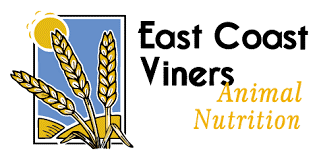After a summer of challenging weather for silage making, beef and dairy farmers are looking for alternatives for winter feed to ensure optimal performance.
Adding liquid molasses to straw and homegrown cereals will be a cost-effective and productive solution this year, according to Steven Eddie, Ruminant Nutritionist, at East Coast Viners Animal Nutrition:
“Forage analysis results of early first cut of silages are tending to show good quality, however many farmers are reporting that their yields are back. Later first cuts that were delayed due to the wet weather look to have a lower nutrient value as swards had shot, producing seed heads which reduced the digestibility and nutrient value of the grass. Many second cuts were also caught in the wet weather and initial reports look to show average results. Now is the time to assess farm produced forages to ensure adequate levels for the winter ahead. Feeding straw can help support forage stocks when they are tight. Despite being relatively unpalatable, indigestible and low in protein on its own, straw is an excellent base for ruminant diets when mixed with a feed that promotes rigorous rumen fermentation. Feeds which are high in sugar, such as molasses, maximise microbial growth rates and makes full use of the straw’s energy. Up to half of silage requirements can be replaced with a molasses blend and straw, enhancing nutritive value and increasing fodder intake and, consequently, performance.”
In the past, farmers may have looked to ammonia treated straw, but this is harder to come by due to increased treatment costs and lack of contractors. Steven explains that the unique balance of sugars in molasses makes it more than just a source of energy:
“The critical components of supplementary feeds are a good source of fermentable energy (FME) paired with a compatible supply of effective rumen degradable protein (ERDP) to maintain optimal rumen pH and improve overall digestive efficiency. Molasses-based liquid feeds contain six-carbon sugars, which are fermented in the rumen, stimulating microbial activity and growth. Five-carbon sugars found in other liquid feeds that are co-products of fermentation, such as pot ale syrup and wheat syrups do not have this benefit. Combining 2kg of straw with 1kg of the right molasses blend can replace 10kg of grass silage in nutrient value.”
Liquid feeds can be poured over forage, fed ad-lib through lick feeders or added to a total mixed ration (TMR), binding additives and distributing nutrients evenly to ensure safe and uniform intake, an attractive option when barley prices are reasonable.
Molasses products can also be added to cereal based rations to improve digestibility and encourage intakes. Practical benefits also include a reduction in dust levels and less sorting at feed out which both minimise waste, improving farm efficiency and sustainability. Products that contain regulated release urea also increase the protein level of the diet.
“With cereal prices down, farmers will be looking to use home grown cereals this winter. It is important to tread with caution however as, depending on how they are treated, the fermentation of cereals can change the balance of acids in the rumen leading to acidosis. Molasses contains sucrose, a six-carbon sugar, which promotes fibre digestion and production of microbial protein. This aids butyrate production which stabilises acid loading in the rumen, reducing the risk of acidosis. If done correctly, you will see a good return on DLWG as well as ration cost/day.”
East Coast Viners Animal Nutrition works closely with ED&F Man, a producer of liquid feed products and blends tailored to specific farm requirements. Research carried out by ED&F Man at the University of Milan, found that replacing a proportion of starch in the diet of beef cattle, with a high sugar molasses liquid feed, led to raised dry matter intake, superior feed conversion efficiency and significantly heavier cattle due to improved daily liveweight gains, compared to cattle fed the standard diet.
ED&F has developed a range of patented Regulated Release blends to maximise protein. Research carried out at the University of Reading investigated the effect of replacing 1.6kg of a soya and rapemeal blend with 2kg of its Regumaize 44 within a TMR for dairy cattle. The results found a significant increase in milk protein (+0.09g/kg) and in milk fat (+1.5g/kg) whilst feed intake was maintained.
“In a year when farmers may be struggling for enough silage or wish to make the most of low-cost cereals, keeping nutrition and intake up with cost-effective options will be vital, and allow them to keep any high-quality grass forage for prime stock such as replacement heifers or lactating cows,” Steven adds.

